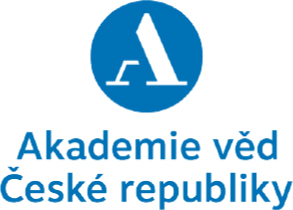Brown coal mining was and continues to be the main source of fuel for electricity and heat generation in the Czech Republic. Located in the territories of the Karlovy Vary and Ústí nad Labem Regions, the North Bohemian Brown Coal Basin (NBBCB) is the area with the largest deposits of brown coal in the country. Coal mining intertwines with the lives of the residents of this area. In the past, it helped attract new labour force but, at the same time, it devastated the landscape and contributed to environmental degradation. Even at its diminished current levels, coal mining continues to play an important role.
Brown coal mining was and continues to be the main source of fuel for electricity and heat generation in the Czech Republic. Located in the territories of the Karlovy Vary and Ústí nad Labem Regions, the North Bohemian Brown Coal Basin (NBBCB) is the area with the largest deposits of brown coal in the country. Coal mining intertwines with the lives of the residents of this area. In the past, it helped attract new labour force but, at the same time, it devastated the landscape and contributed to environmental degradation. Even at its diminished current levels, coal mining continues to play an important role.
During the past regime (1948–1989), NBBCB was essential to the development of the country’s ever more electricity-demanding industry. Due to its orientation on brown coal mining and heavy industry, the communist regime had to expand brown coal excavation continuously. Among the consequences of that expansion was that some settlements which stood in the way of expansion were demolished and their residents were relocated to surrounding towns or villages. One of those settlements, Kralupy u Chomutova, was demolished in 1976.
The article focuses on depictions of settlement demolition in contemporary culture, specifically in the TV series, Muž na radnici (Town Hall Man), which is compared to contemporary press as represented by the regional weekly Nástup (Muster) whose territorial coverage included the demolished settlement. Produced by the public-service Czechoslovak Television, the Town Hall Man series focused, as its central theme, precisely on demolition of a large part of town to make room for new construction. The Town Hall Man was broadcast in the 1970s, the time when many settlements were torn down, mainly in North-Western Bohemia. The article studies what kind of arguments were staged and how the characters were developed in order to depict the demolitions as a positive phenomenon. However, it is not the goal of the article to study how effective the series was. As our second source, we analysed the Muster weekly, covering the time period when Kralupy u Chomutova was demolished, namely the years 1970–1979.
We hypothesised that the communist regime, which was in control of the contents of both the weekly and especially the Town Hall Man TV series, strived to shed positive light on settlement demolitions and present them as a favourable process. This was only confirmed for the Town Hall Man series, which used several arguments to depict demolitions positively (the settlement shown in the plot was only partly demolished). Progress was staged as the first argument. Old and inadequate housing was demolished and replaced by new buildings with modern amenities. The new housing symbolised the modern age, the socialist era, replacing an old, selfish age. Public interest was the second argument. New buildings were necessary for the sake of all, whereas the owners of old houses opposing their demolition were depicted as ignorant and corrupt individuals who stood in the way of others’ pursuit of a better life.
The situation of the Muster weekly was different. The analysis of the ten years during which the coal mine expansion culminated revealed almost no mention of the demolitions at all. Of all issues of the weekly, we only identified one article that mentioned settlement demolition explicitly. Nevertheless, the topic was represented by two more articles. The first accounted for housing construction in the former administrative district of Chomutov. New flats were needed to relocate the residents of demolished villages. The other publication presented achievements in brown coal mining, depicting the miners as heroes who not only met but exceeded their work targets.
As expected, the Town Hall Man series provided a highly positive depiction of settlement demolitions. It supported the process by accounting for the integrity of the characters who devised the demolition plan. In contrast, the Muster weekly rather obscured the demolitions and pursued substitute themes to depict the expansion of coal mining as favourable.



